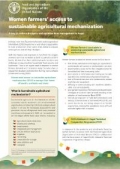Nepal, a landlocked country known for its mountain peaks including Mount Everest — the world’s tallest peak, is home to Chiti village. Most households of Chiti village rely on agriculture and wage labour for their livelihoods. Rice, maize and wheat...










